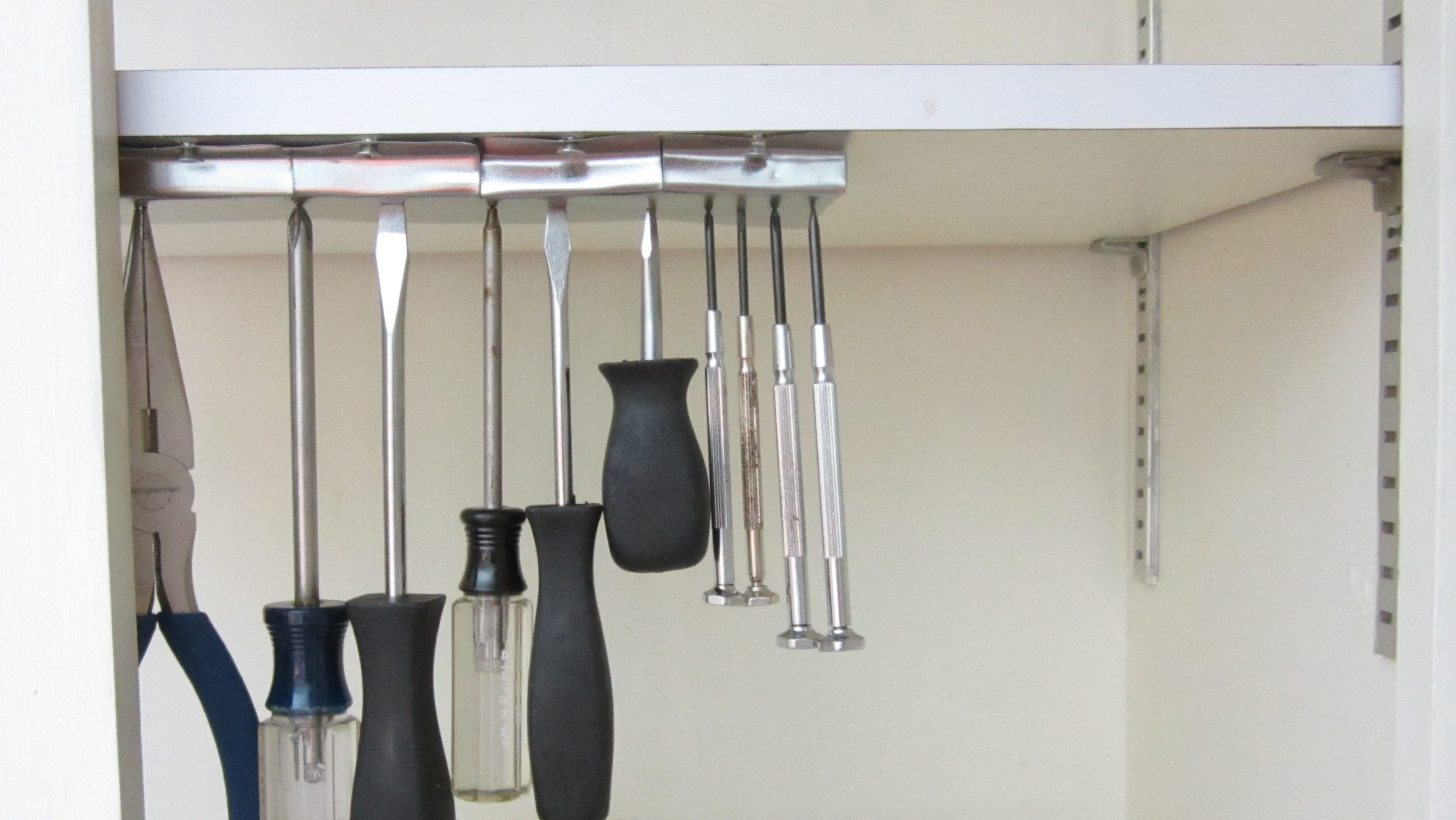If you wish to have a larger mounting surface, you can either make several individual brackets and mount them side by side, or you can make larger brackets with multiple magnets.
To make larger brackets, the procedure is basically the same. You just need to use a larger piece of sheet metal. For ever additional magnet add one inch to the width of the metal. This will allow the magnets to be spaced out a little. So for two magnets the initial sheet metal should be 2.5″ x 3.5″. For three magnets, the initial sheet metal should be 3.5″ x 3.5″ and so on.
It can be difficult to fold up the sides if they are too long. If this is the case, it may help to cut the sides into sections of two or three magnet widths. The shorter sections should be much easier to fold.
The magnets can support more weight if they are all in the same orientation. But this makes it difficult to secure them in place because they want to repel each other. So be careful to keep the magnets aligned when inserting them.



